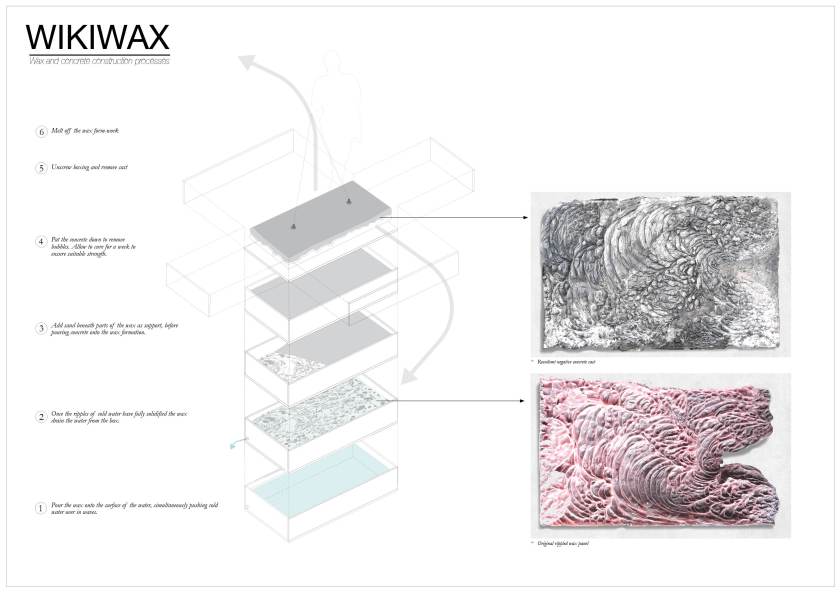This project looked to understand and develop a construction set that could be open source such as the WikiHouse CNC construction set. Through the material research done, I have predominately focused on the use of wax in construction. Experiments have explored its use as a form-finder, form-work and as a composite material. To apply this system as a Wiki, I strived to develop potential products, along with build information, which could then be open source. However the nature of the research, the complexity of the processes, and the functionality of the final products led me to question whether the Wiki route would be feasible. As an alternative, I have begun to explore taking the system along a business route, whilst considering making parts open source for individuals.
Weighing up the options:
1. Open Source
If someone wants to make an item then they have the information available to do so. This could be particularly relevant for the environmental products which could act as cheap DIY alternatives for those that can afford to buy specialist systems.
2. Private copyrighted business
The nature of the WikiWax processes makes it difficult to replicate, they are also not items of necessity nor would they be built as a collective. These are just some of the reasons why the systems developed don’t naturally lend themselves to be open source. As beautiful items they could instead be made into unique designer products and sold.
3. Open Source but protected form big companies
This approach allows for both systems to operate. Individuals can make their own table for example or develop and modify the processes, allowing for innovation and growth. But also products can be patented and sold. Through this strategy architecture is open to 100% of the population rather than the 1% if limited to sale only.






For further information on my research and material experiments see my portfolio





























